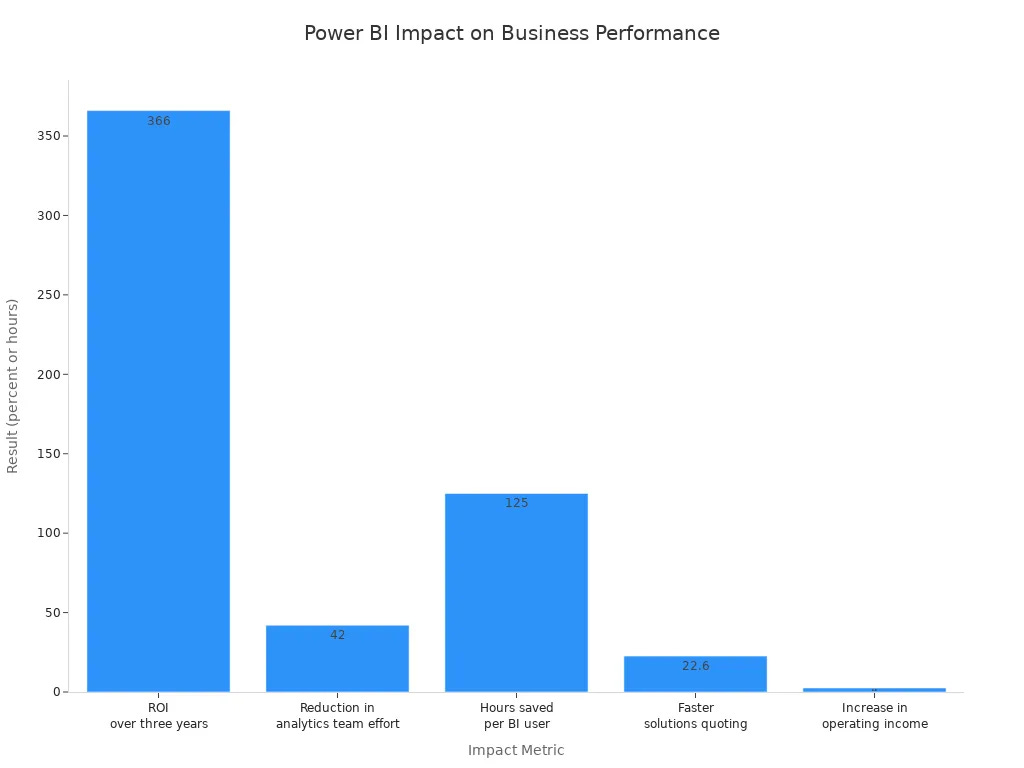Understanding the Impact of Power BI Metrics on Strategy
Power BI Metrics are very important for your business strategy. They give you information to help you make smart choices. Recent studies show big benefits from using these metrics. For example, businesses saw a 366% return on investment over three years. They also saved 125 hours for each BI user every year.
Key Takeaways
Power BI Metrics give important i…


